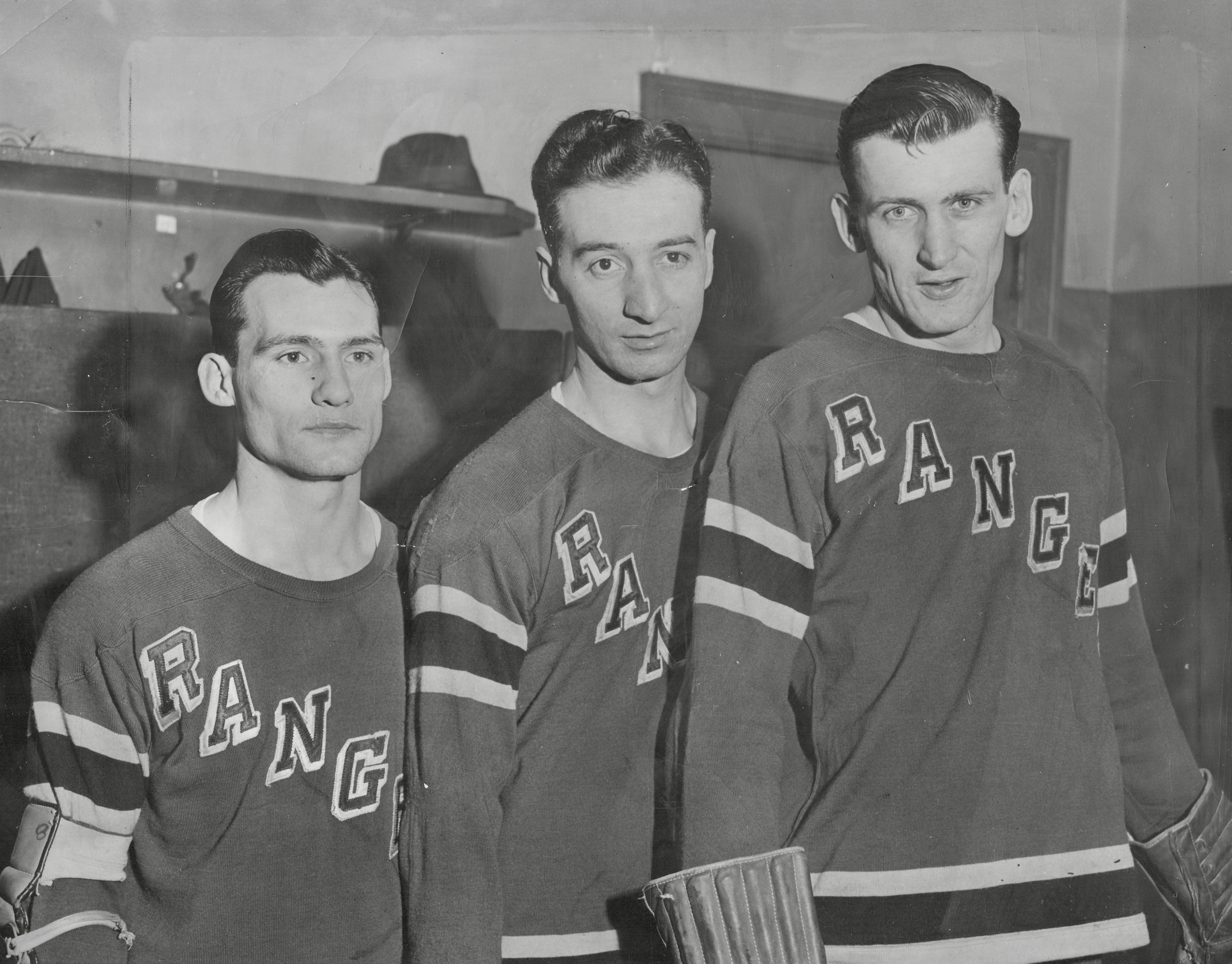
The diminutive right winger Johnny (Black Cat) Gagnon played most of his hockey for the Montreal Canadiens in the 1930s, often on a line with Howie Morenz and Aurèle Joliat, but midway through the 1939-40 NHL season, Montreal sold his contract to the New York Americans. He and his new team were back at the Forum on Saturday, March 2, 1940. As seen here, there were gifts for him, pre-game, including this handsome cellarette (a liquor cabinet) presented by a deputation of fans from Gagnon’s hometown, Chicoutimi. That’s Le Canada journalist Paul Parizeau on the right, lending a hand, holding his hat.
Once the furniture had been cleared from the ice, New York surged to a 2-0 lead before Montreal tied the game, then went ahead in the second on a goal by Louis Trudel. It was left to Gagnon to come through as the spoiler and tie the game. Set up by Pat Egan and Tommy Anderson, he beat Montreal goaltender Mike Karakas with a slapshot, no less, as described by Montreal’s Gazette.
Ten minutes of overtime solved nothing and the game finished in a 3-3 tie. In fact, the overtime went on longer than it meant to, with the bell failing to chime to end the game, and referee Mickey Ion oblivious to the time. Finally, New York coach Red Dutton jumped on the ice to signal that it was all over.
The following night in New York, the teams met again. By the end of that night, it was almost over for the Canadiens, as the Americans prevailed 3-0 to push Montreal to the brink of mathematical elimination from the playoffs with five games to go in the regular season. Montreal would be the only team to fail to make the post-season grade that year, as they finished dead last in the seven-team NHL, nine points adrift of the Americans.
Johnny Gagnon died on a Wednesday of today’s date in 1984. He was 78.
(Image: Conrad Poirier, BAnQ Vieux-Montréal)











